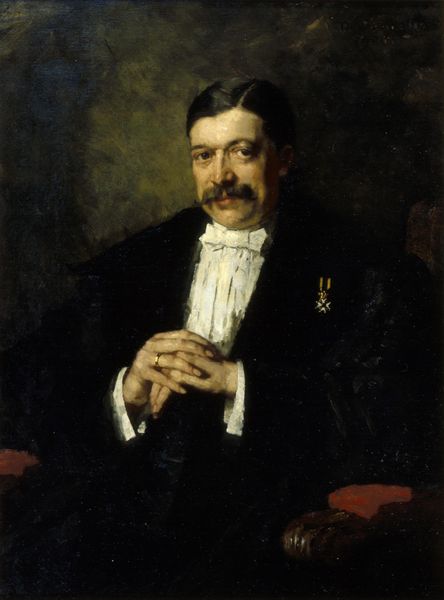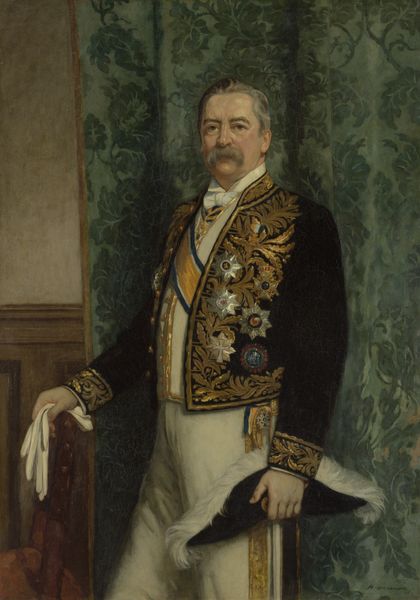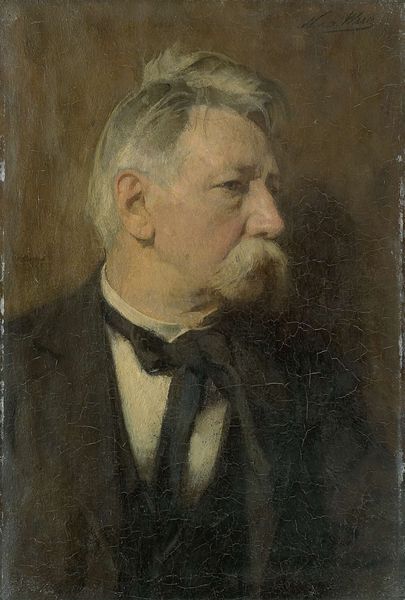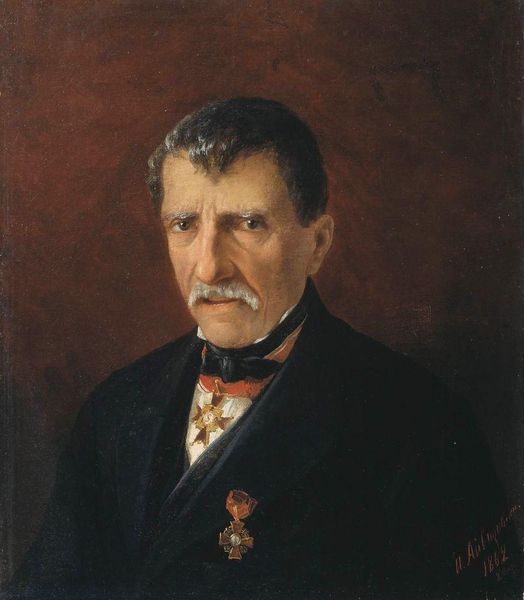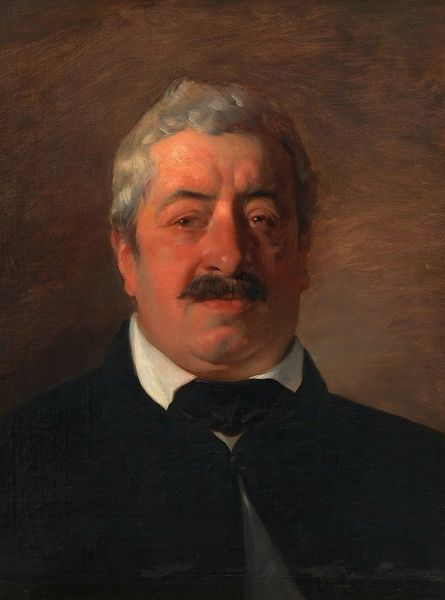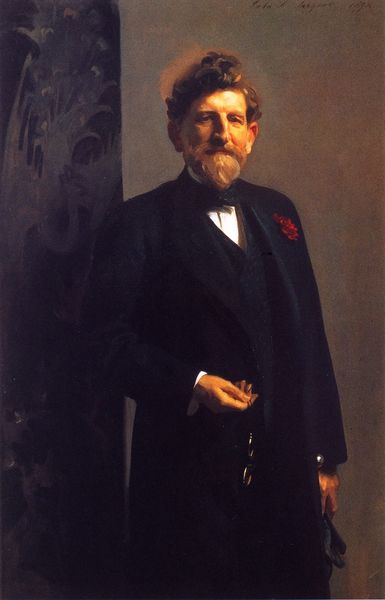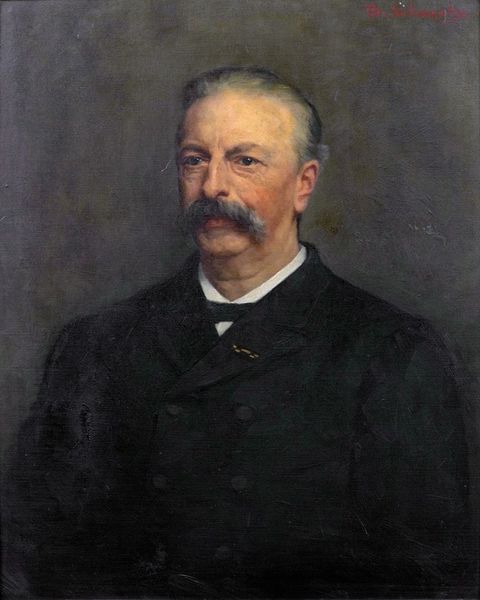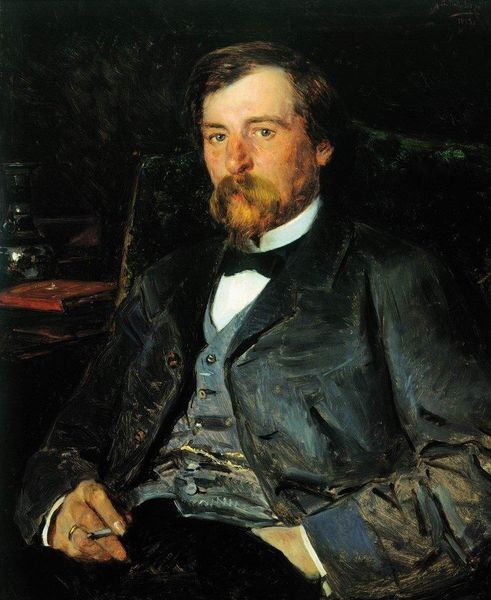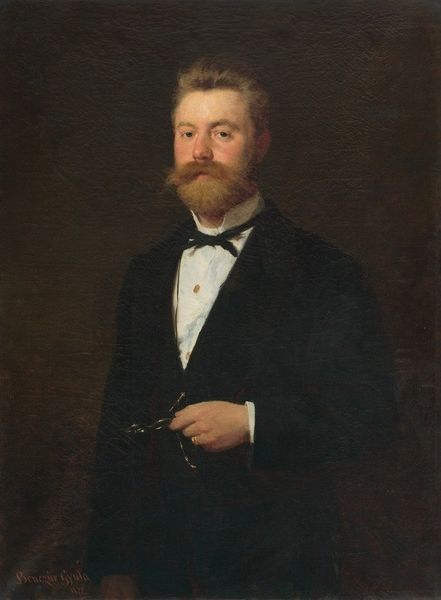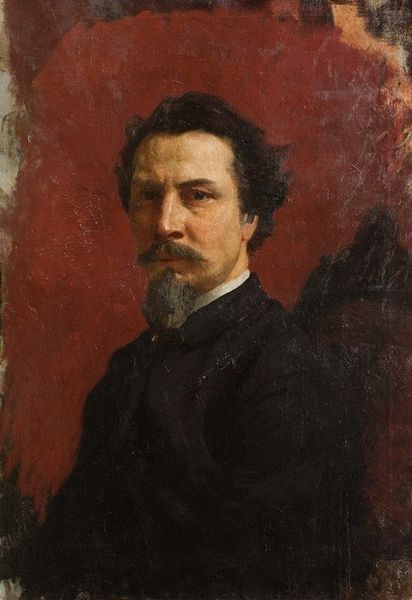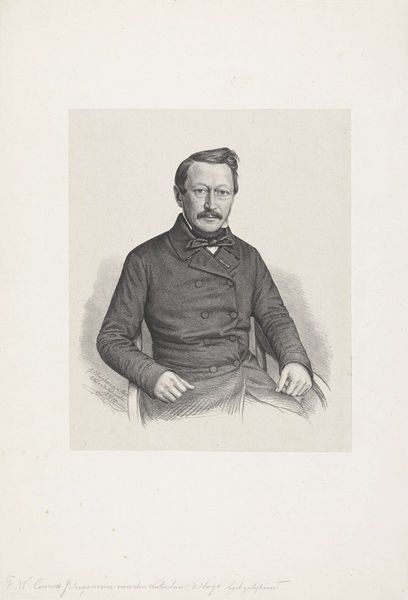
Copyright: Public Domain: Artvee
Editor: So, here we have Léon Bonnat's "Portrait of a Man" from 1868, an oil painting. It's a very formal and serious portrait; the man's gaze is so direct and imposing. How do you read this piece? Curator: What strikes me immediately is the emphasis on depicting bourgeois respectability in 19th-century France. It's not just a portrait; it’s a statement about social standing. Think about the Paris Salon at the time, the most influential art exhibition in the Western world. Bonnat strategically positions his sitter within the visual language accepted and celebrated by that institution, reaffirming and solidifying the sitter’s place within society. Editor: So it's less about the individual and more about what they represent? Curator: Precisely. The man's dark suit, the hint of a watch chain—these are markers of his status and participation in the developing modern economy of the period. But how does this compare, for example, with the work of artists outside that immediate circle of power and influence? Think about the Impressionists at this same moment. How do you think they would react to this type of formal portraiture? Editor: I guess the Impressionists were pushing against this very traditional kind of art establishment. They wanted to capture more fleeting, personal moments. Curator: Exactly. Bonnat succeeded in maintaining the status quo of artistic production. What do you think is the enduring relevance of a piece like this, in contrast to the fleeting moments captured by impressionists? Editor: I think understanding these formal portraits helps us grasp the social structure of the time, and how art was used to maintain it, compared to how other groups wanted to upend such artistic structures. Curator: Indeed. By looking closely, we see how art wasn't just aesthetic expression; it was deeply entwined with social power and cultural values.
Comments
No comments
Be the first to comment and join the conversation on the ultimate creative platform.
